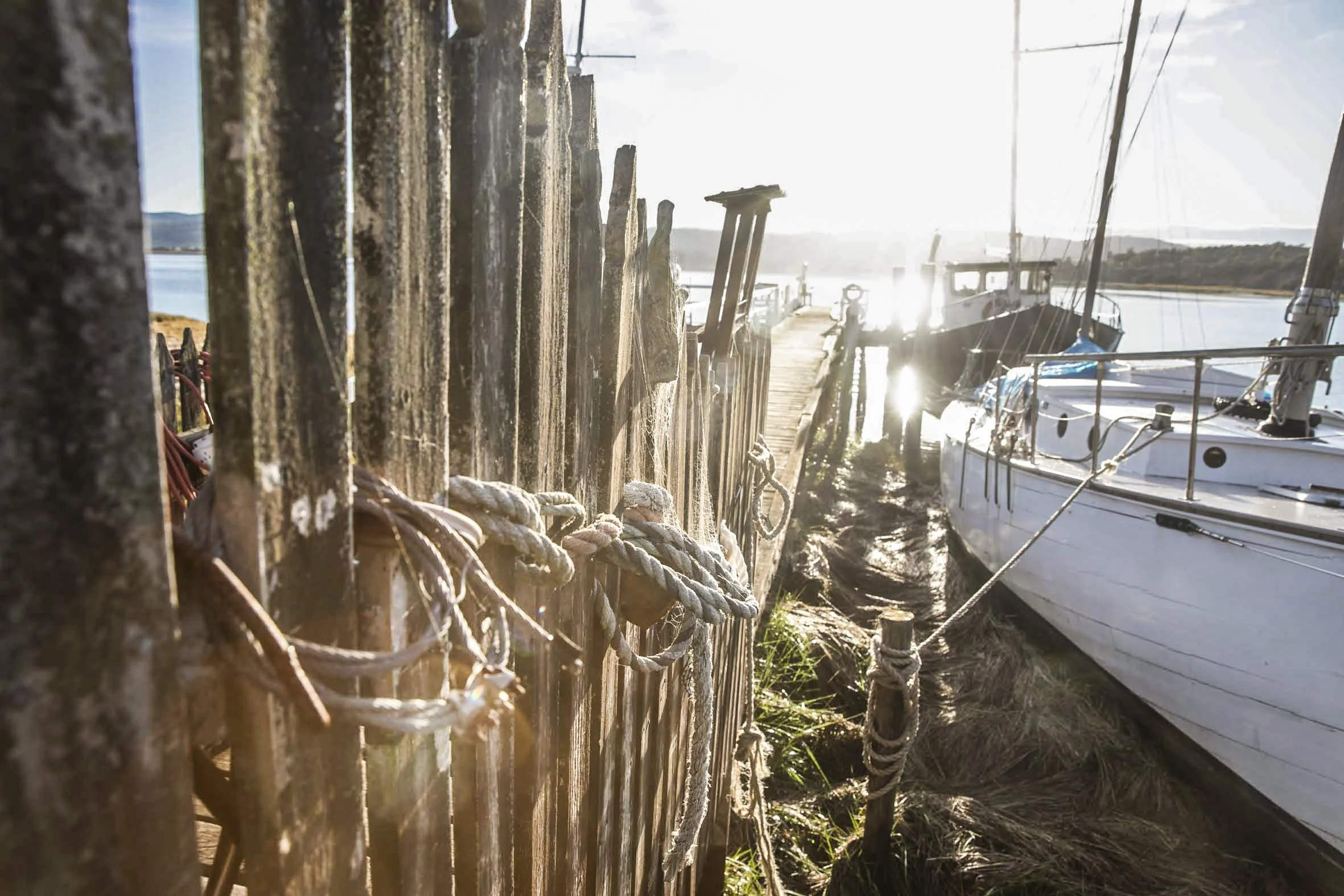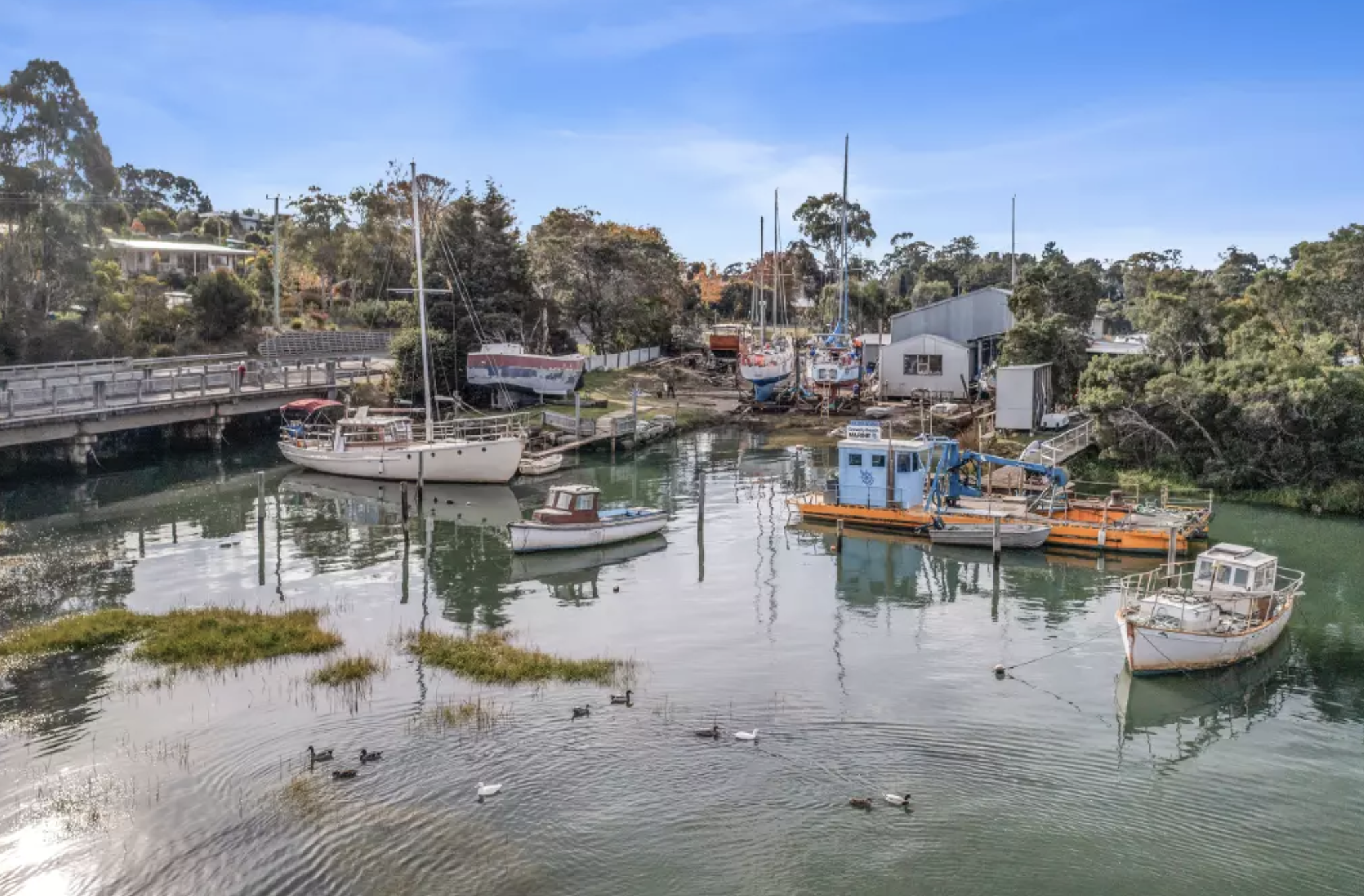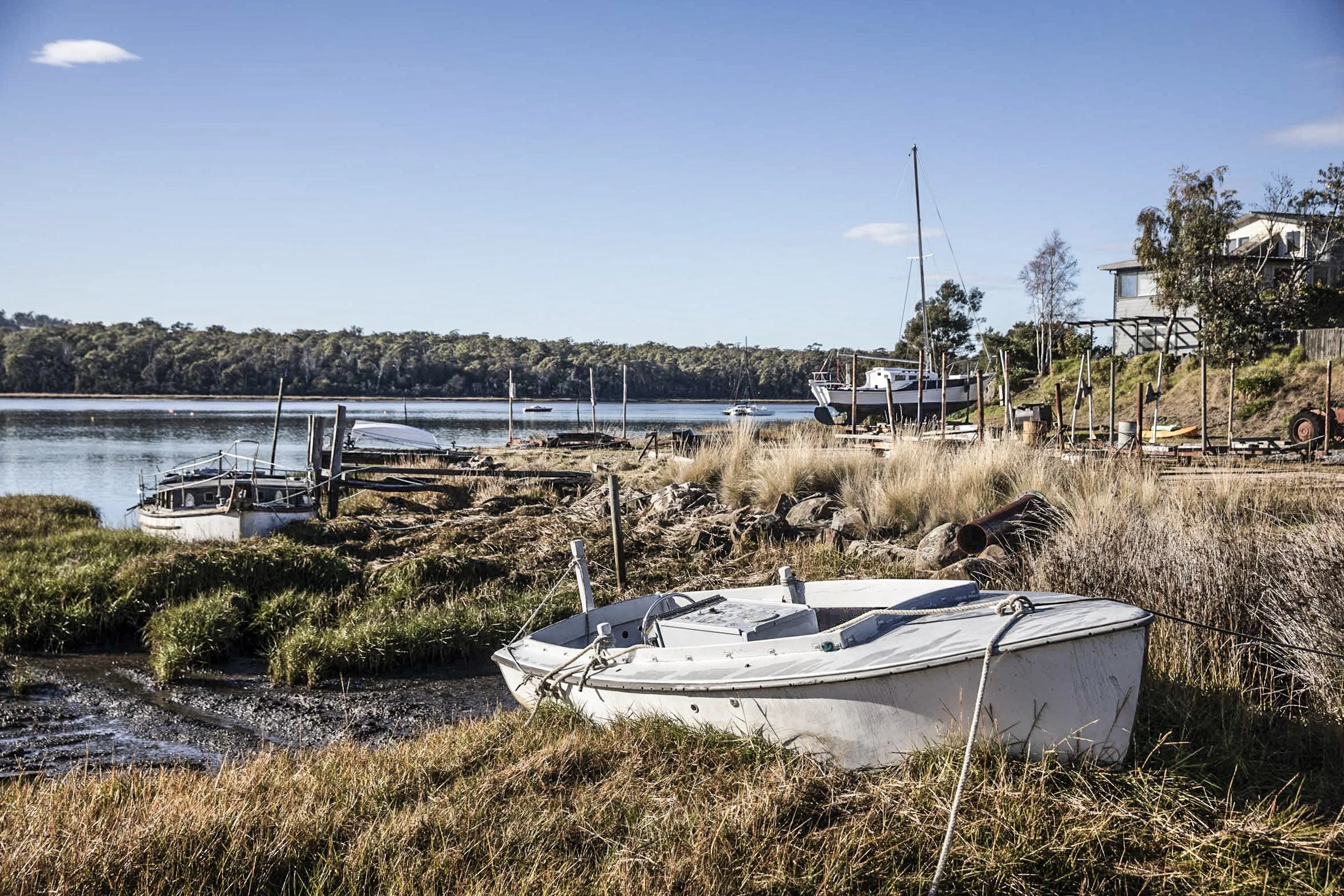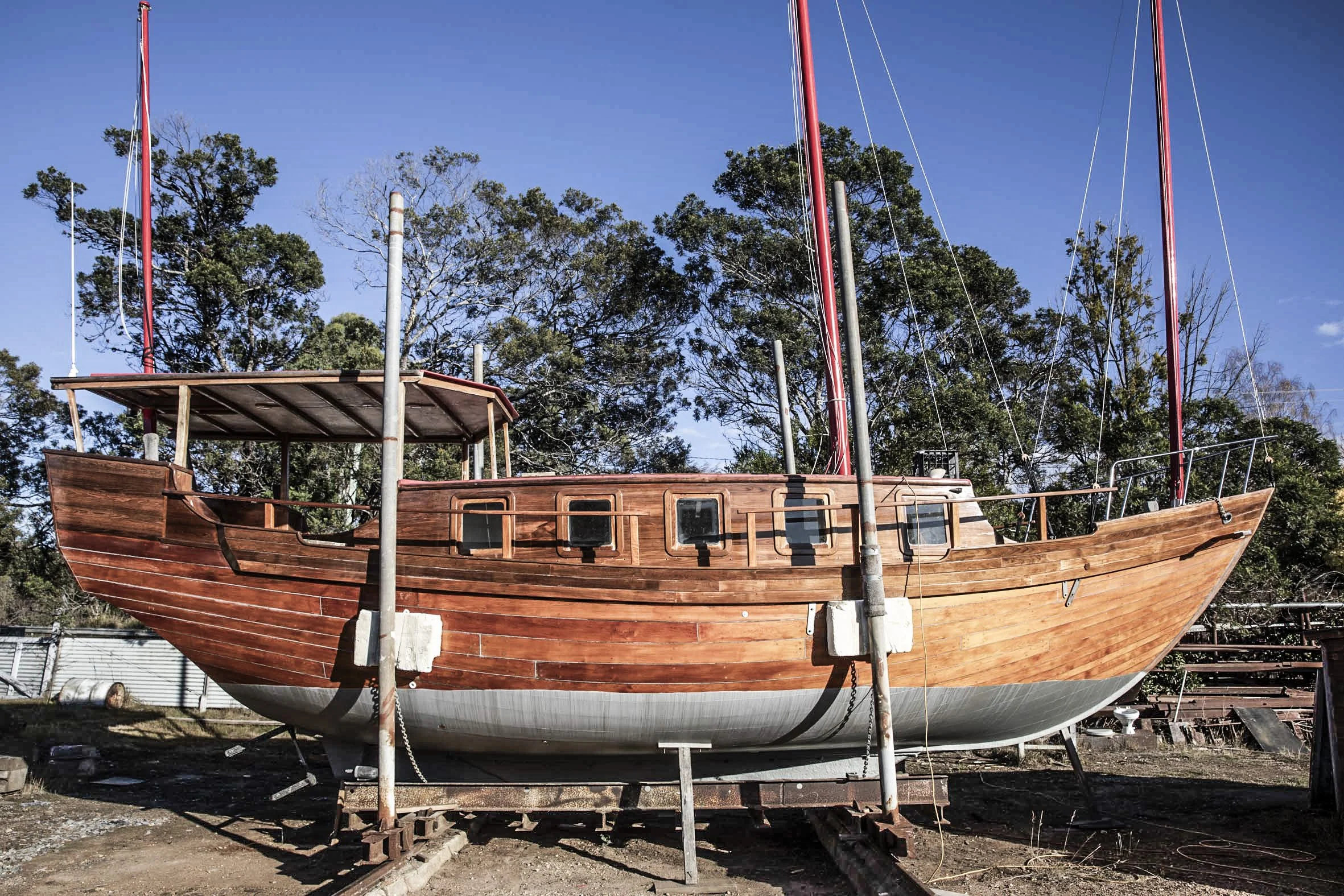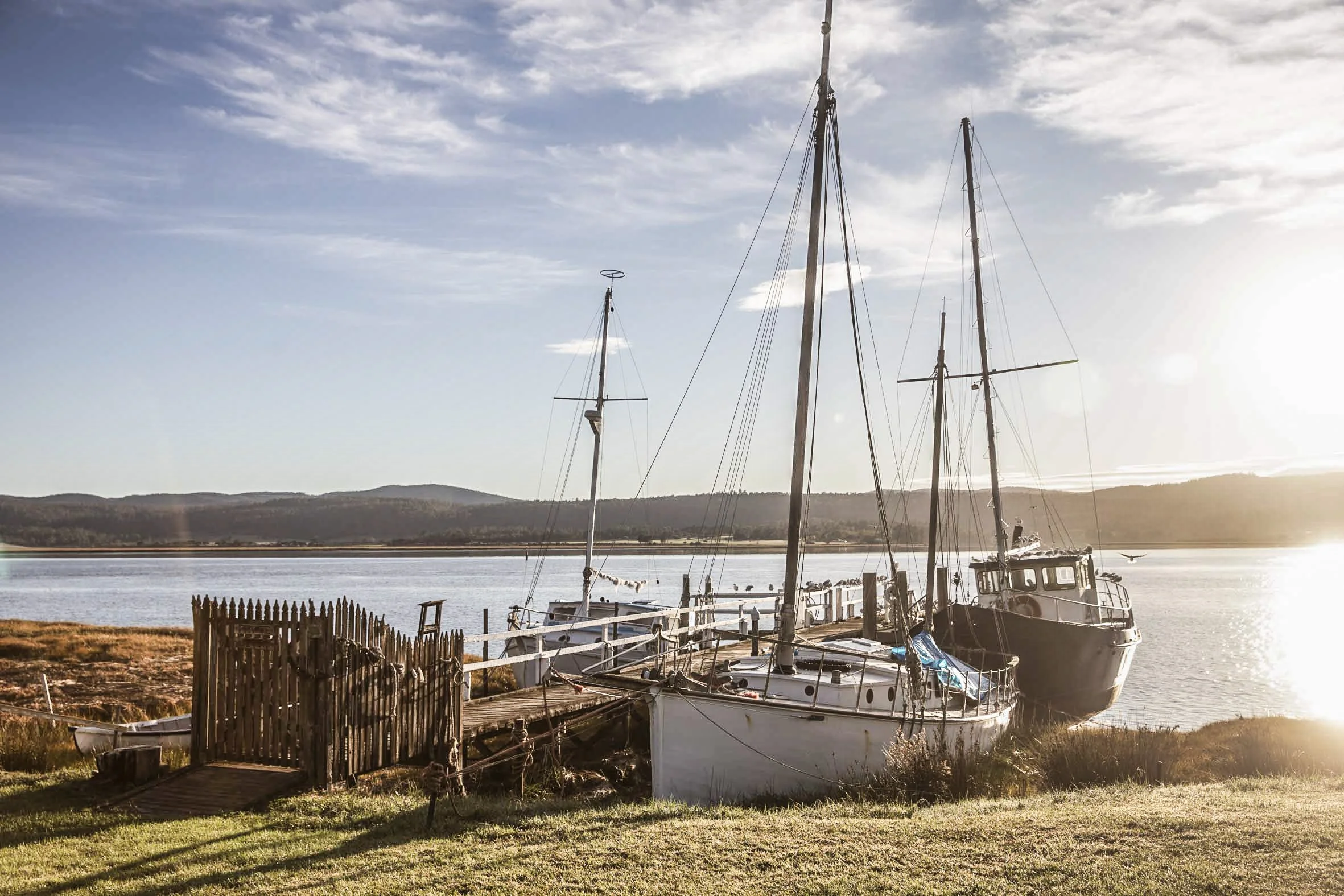Consider the Options- Opportunities on the Tamar
There’s a place called Gravelly Beach on the west bank of the Tamar River about half way between Beauty Point and Launceston. Driving along the country road beside the river the first thing that caught my eye was a Chinese Junk in a boat yard, Varnished hull gleaming in the sunshine. I find it hard to drive by sights like this, so I parked the hire car and went for a stroll.
The second thing that I noticed was that this wonderful old shipyard was for sale
"Consider the Options" - Lifestyle/Income/Develop
• Leasehold Land of 12,152 sqm
• Residential Dwelling & Assoc Busineses
• 22 Boat Moorings
Knight Frank bring to the market this exceptional opportunity on the Tamar River.
The property is held under a Crown Land Lease with very favorable commercial terms over the site area of 12,152 sqm. The EOI allows buyers to consider the Business & Lifestyle opportunities of the offering, or consider the re-development opportunities on such a unique parcel of land.
Parties will be invited to submit for the 3 aspects of the current operation:
- 6 Bedroom Residence, Workshop, Jetty, Slips, "Gravelly Beach Marina" Business
- 22 Moorings on the Tamar River
- Barge Business operating on the Tamar River
This presents the ultimate in Lifestyle opportunities depending on personal choice. An opportunity to live on one of Tamar River’s idyllic points, generate passive income from marine related leases, or re-develop the site to capitalise on its unique location.
A "must inspect" for the astute Retiree/Developer/Investor.
Offers Over $1.75 million WIWO.
Walk in Walk Out. Now there’s an interesting concept!
The boat yard needs a good tidy up, as most good boat yards do. There are two working slipways, quite a few interesting timber boats around in various states of disrepair, and a great big shed that appears to house generations of maritime objects that “might just come in useful one day”. It’s picturesque, it’s mildly functional and just for a fraction of a second, the romanticism the of prospect trumps the daunting realities.
But walking around the yard looking at the boats, many of which will never sail again, made me want to know a little more about this 43 mile long tidal river.
In a practical sense its hard to go past the River Tamar Boating Guide.
But if you are looking for a more historical background on the river who better to go to than Launceston local, Julian Burgess who made the following contribution to a book entitled Launceston and its environs: a Sound History
For thousands of years the people who dwelt on the banks of the estuary we now call the Tamar River lived with its many and varied sounds – from gentle ripples on tranquil waters to the thunder of a raging flood. The wind playing on the stands of tea-tree lining the riverbanks and stirring tall gums nearby joined the river sounds.
All these sounds would have been all too familiar to the Leterremairrener people who lived near Kanamaluka (Tamar River), Mangana Lienta (South Esk River) and Mangana Lakekeller (North Esk River). Their hunting, socialising and ceremonies added to the sounds of the rivers.
Then Europeans arrived with different sounds. The first were probably British explorers Matthew Flinders and George Bass and their crew of eight on the colonial sloop Norfolk in 1798 during their circumnavigation of Van Diemen’s Land.
Bass and Flinders established the existence of a strait between New Holland and Van Diemen’s Land, and Flinders’ chart encouraged others to visit the estuary that had been named Port Dalrymple. The sounds of the rivers were joined by foreign noises – wind in rigging, the slapping of water against a ship’s hull, shouted orders, and the rattle of anchor chain.
Frenchman Jacques Félix Emmanuel Hamelin, captain of Le Naturaliste in Nicholas Baudin’s expedition, used Flinder’s chart to enter the estuary in April 1802. Then came William Collins who was part of a large British expedition, lead by Colonel David Collins (no relation), to establish a settlement at Port Phillip.
In late 1803 David Collins sent his namesake with a small crew to Port Dalrymple to report on the possibilities of relocating his settlement there. William Collins and his party arrived on New Years Day 1804 and spent 18 days sailing the full length of the estuary in the brig Lady Nelson.
The party included mineralogist Adolarius William Henry (Addy) Humphrey who recorded the voyage in his diary. He said that at the head of the estuary they were in desperate need of fresh water “ … on Monday the 9th Messrs Simmonds and Collins, after searching all day, found a most beautiful fall of fresh water.” Perhaps they were the first Europeans to see and hear the sounds of the Cataract Gorge.
During William Collins’ visit another, much more terrifying noise was added to the sounds of the river. A group of Aborigines, making it clear the visitors were trespassing and not welcome, were fired on. The sudden explosion of gunpowder and frightening report of muskets echoed across the water. It might not have been the first time guns were fired on the estuary but it signalled more violence and devastating change to come.
When the party returned to Port Phillip they learned that David Collins had decided to relocate his settlement to the Derwent River but the British invasion of Port Dalrymple was less than a year away. In November 1804 a contingent of 181 soldiers, convicts and one settler, under the command of Colonel William Paterson, arrived at Port Dalrymple.
Paterson’s primary role was to secure northern Van Diemen’s Land for the British government against possible French occupation and that meant protecting the entrance to the estuary. But they soon found the best place for a settlement was at the place where the three rivers met.
There were more different sounds on the river. The newcomers felled trees, built shelters, military barracks, houses and fences. They brought domestic animals – livestock, dogs and horses all with strange voices – and planted vegetables and crops. They fired cannon and built more boats and ships.
The sounds of countless generations fell silent, replaced by soldiers and convicts, farmers and builders, and the despairing clanking of the chain gang, the savage crack of the flagellator, the agony of the tread wheel and the gallows.
Animals and building materials were transported between settlements at George Town and Launceston and trading vessels from Hobart, Sydney and other places entered the river with essential goods. By 1830 the land for miles around the settlement of Launceston was being cultivated and the Aborigines had been driven away.
As the town grew the murmur of social and sporting activities joined the sounds of the river. An item in the Launceston Advertiser of 4 April 1831 stated that a regatta was shortly to take place among the ships boats “in the harbour” and local craft. From 1840, regattas became a regular event on the estuary.
Breweries, foundries and refineries appeared on the river edges, and boat yards created and repaired vessels on the waters edge. Ships from far and wide made fast to an ever-growing line of wharves in the North Est. The noise of steam engines, both waterborne and onshore, joined the gentler sounds of sail and oar.
There were river ferries and pleasure boats and the rock crusher in the Cataract Quarry. There was bridge building, pile driving and channel dredging. Later came the sound of internal combustion engines in motor vehicles on streets and roads near the rivers and ships and pleasure craft on the rivers.
In the 1950s the Trevallyn Dam emasculated “the beautiful fall of water” in the South Esk and even more noises tried to drown out the sounds of the river -- music concerts at the First Basin, hovercraft and seaplanes on Home Reach and fireworks and festivals on the banks of the Yacht Basin.
But even with so much change and new noises over the past two centuries the natural sounds of the rivers can still be heard. A brisk, cleansing northerly wind, the rippling of a summer breeze, the cold draft down the Cataract Gorge drawn by the ebb tide in winter or the awesome roar of a great flood should always remind us of the great natural beauty of our place.
The book Launceston and its environs: a Sound History is available for purchase HERE

